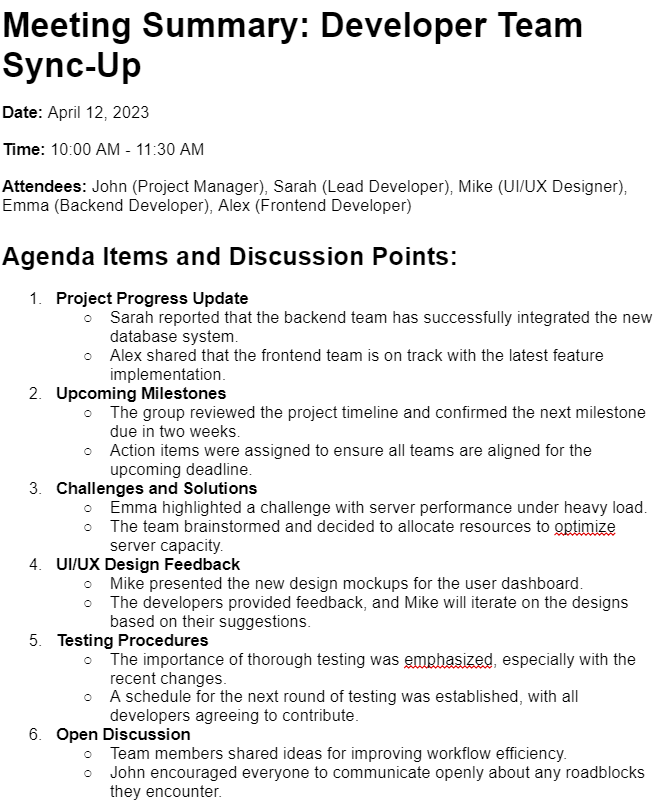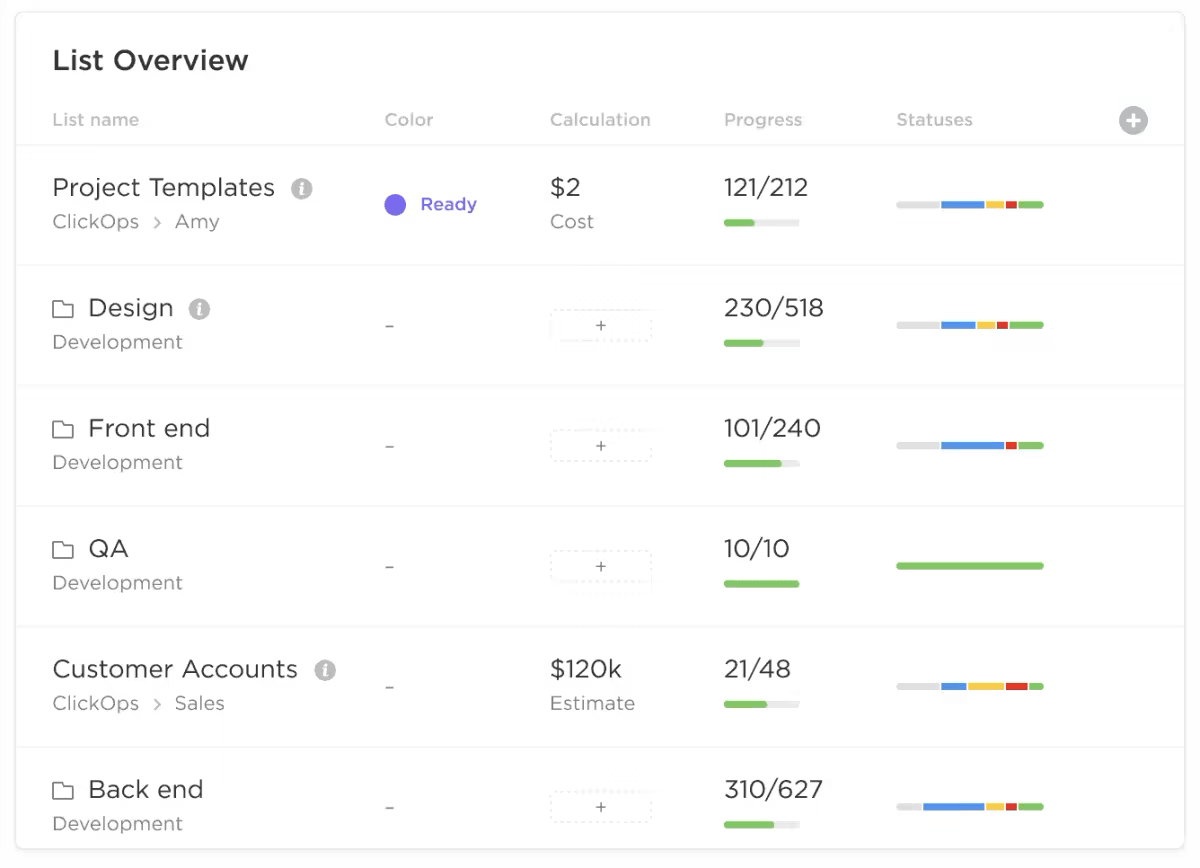Project Management Statistics and Trends in 2025

Sorry, there were no results found for “”
Sorry, there were no results found for “”
Sorry, there were no results found for “”
Project management helps businesses of all sizes optimize resources, mitigate potential risks, and achieve their set goals. It equips the leadership to plan and manage projects and ensure they are completed on time and within budget.
Case in point: Some general project management stats:
The project management industry is undergoing a major transformation in 2024. Automation and AI are replacing manual and spreadsheet-based functions, among many other changes.
This requires project managers to tune in and guide the organization in responding to the opportunities and the extra workload.
Keep reading if you’re looking for answers to ensure more successes than failures with technology-powered project management developments. Here, we discuss the latest project management statistics, trends, methodologies, and tools for 2024.
Project management involves applying skills, tools, and techniques to plan and implement a project to achieve the desired outcome. This requires aligning projects with strategic goals, defining objectives, creating realistic project plans and estimates for resource allocation and management, overseeing progress, and managing stakeholders.
According to the Project Management Institute, each project must go through the five project lifecycle phases:
Let’s face it: failed projects can derail your initiatives and delay business growth.
A PMI study found that organizations that don’t adequately include project management in their strategies have a project failure rate of over 60%.
This holds true even today, considering project management is more than simply tracking deadlines and setting a budget.
Project failure statistics:
So why is project management important? Here are a few ways in which efficient project management can help:
Let’s look at some of the project management statistics and trends for 2024:
While newer technologies and changing customer expectations usher in complex issues that require project management leaders to reimagine the nature of work and how it gets done, the project management software industry is poised to grow significantly.
There are several project management methodologies, each with its rules and principles. The three main methodologies include:
The agile method is a collaborative and iterative approach that facilitates team self-organization. In this methodology, planning and work management are adaptive and evolutionary. Teams strive to deliver the project early and are willing to change if it translates to process improvement.
Agile innovation stats as per Bain & Company:
A software application with advanced features must be ready for users in two months.
Following the Agile project management process, the project is divided into several iterations, all of the same duration—five days in this case. At the end of each iteration, the team delivers a working application/feature.
Let’s assume the project is split into eight releases in eight weeks.
Instead of gathering and analyzing requirements for three weeks, the team will determine the essential features required by the end of the first iteration—week one in this case. At the end of each sprint, the team analyzes whether the application is heading in the right direction and decides which changes to make and which features to add based on priority.
Based on the feedback, the development team implements the changes, and the working application will be ready within the first few weeks using agile project management methods.
Lean manufacturing, also known as just-in-time manufacturing, is a production method that helps reduce production time and response time to suppliers and customers. This method eliminates waste, optimizes processes, and reduces inventory costs by producing only what’s in demand instead of overstocking—especially in the manufacturing industry.
While it dates back to the 1940s when Toyota developed the Toyota Production System, lean manufacturing is applied as a management method across industries and domains.
Suppose a printing company faced long lead times and delayed orders for some products while inventory of other products piled up, and over 10% of the finished product was discarded.
To improve efficiency and reduce waste, project teams adopted a lean project management approach that mapped the value stream and identified waste that could be removed from the workflow.
The results: On-time delivery increased to 95% with shorter lead times and efficient inventory management, resulting in less product waste.
The 12th principle of the Agile Manifesto states, “At regular intervals, the team reflects on how to become more effective and tunes and adjusts its behavior accordingly.” Agile projects focus on continuous improvement, fitting the Six Sigma approach in project management methodology.
Agile teams use Six Sigma in project management practices to find the root cause of an issue, eliminate bugs or defects as quickly as possible, test solutions, and ensure that high-performing projects will continue to be effective in the future.
A manufacturer of aircraft engines and avionics was tasked with reducing supplier-related quality issues.
The organization implemented Six Sigma methodologies such as process mapping, root cause analysis, and statistical process control to improve its suppliers’ performance and reduce supply chain management costs.
They used Six Sigma to eliminate sources of defects in the supply chain and reduce supplier-related quality issues, improving product quality and reducing the amount of time and resources needed to rectify these issues. This helped the company identify and eliminate inefficiencies in the supply chain process, leading to higher project success rates.
Now, let’s examine the project management trends that help project professionals and organizations get more done with fewer resources.
AI in project management statistics as per PMI:
Project professionals must become fluent in many ways of working, such as predictive, agile, or design thinking, to apply the right techniques at the right time to deliver winning results.
The widespread use of generative AI tools at individual and organizational levels makes it easier for project managers to deliver projects successfully.
Consider the new way of working as a chain of events and tasks to deliver a result, where generative AI can automate, assist, or augment project management skills and competencies for the project manager.
For instance, ClickUp has a generative AI tool called ClickUp Brain that helps project managers at every stage of the project lifecycle, from planning, time and cost management, and risk management to writing and communication.
Taking the example of software development project lifecycle, here’s how it can help:
| Stage of the project lifecycle | ClickUp Brain capabilities |
| Project planning | Simplifies data mining and analysis of historical data to help with project planning and optimization and generates comprehensive documentation for the project teams to refer. Creates project briefs that project managers can quickly flesh out with specifics |
| Time and cost management | Supports time and cost estimation, identifies risks, and calculates potential delays and cost overruns |
| Risk management | Identifies risks and gives recommendations for risk mitigation and elimination. Helps define risk planning strategies |
| Improved communication | Automates writing of meeting summaries and generates communication briefs |
| Improved collaboration | Generates sub-tasks from open tasks that you can further assign to team members or new project managers |
Let’s take an example here.
In the IT environment, technical and non-technical workers must communicate effectively about projects. Project managers can use ClickUp Brain to generate report summaries using non-technical language for stakeholders such as the leadership, business team, and clients.

If your project involves participation and input from multiple departments, ClickUp’s Project Management Template will help everyone collaborate. This template serves as a single source of truth for all project, program, and portfolio managers, ensuring they are on the same page for executing the project quickly and reporting progress in a standardized format.
Stakeholders can view the template in List, Form, and Doc views. The template has 25 statuses to track progress, including at risk, in progress, on track, update required, not yet started, and completed.
Project managers can use daily report templates to break down large milestones into smaller chunks for the team to prioritize the right tasks on a daily basis.
Risk mitigation in project management statistics:
Risk management is an important area in project management automation. New project management processes and tools use big data and ML (machine learning) to help project managers and leaders anticipate risks that could otherwise go undetected.
These project management tools propose mitigation actions and adjust plans automatically to avoid certain risks.
While the current methods are time-consuming, redundant, and manual, with ML and natural language processing (NLP) facilitating project planning, definition, and reporting, we can expect the following benefits:
ClickUp for Project Management is one tool that brings your project team closer with connected workflows, docs, and real-time dashboards.
Pro Tip: Create a risk mitigation workflow on ClickUp’s Whiteboard and bring together the team to brainstorm, decide the steps, and easily access the workflow whenever needed.

You can also use ClickUp’s Risk Register Template to identify and track potential issues, organize risk assessments, and track their impact in one place.
This ready-to-use, customizable Folder template provides you with seven different Custom Fields to track risks and costs and a choice of six views to keep all the information organized. The List of Risks View will help you keep track of all the risks associated with your project while the Risks by Level View will provide insight into the severity of each risk.
We see the PMO taking responsibility for implementing strategic targets and becoming an established department with access to leadership.
In this context, project management training on strategic capacity planning, resource management, communication, and skills management will become even more important to ensure project managers can plan and implement strategically valued projects.
For example, in portfolio management, the PMO must work on aborting weaker projects to free up the staff’s time on projects/tasks with a higher priority.
PMO teams should brace themselves for the following changes:
Project management software statistics:
Every year, nearly $48 trillion is invested in projects. Yet, according to the Standish Group, project failure statistics reveal that 65% of projects fail—imagine these projects’ wasted resources and unrealized benefits.
The modernization of the project management industry started more than a decade ago. However, most organizations and project leaders still rely on spreadsheets and other legacy applications.
One reason for poor project performance is the low maturity of the technologies available to manage projects. Arguably, they’re adequate when you measure project success by the project deliverables and deadlines met. Still, they fall short in the current state of enterprise project management, where initiatives and the business are continuously changing.
These shortcomings have led to a boom in the project management software market. An increasing number of organizations are now using project management tools to improve their planning and collaboration capabilities.
Tools like ClickUp help you manage your team’s workload. They simplify project collaboration and multi-step workflow management, especially for the most complex projects. For project managers who are simultaneously managing multiple projects, these tools can mean the difference between success and failure.
Here’s how ClickUp helps you manage complex projects:


ClickUp’s pre-built project management templates are loaded with automated workflows, pre-built steps, plug-and-play process documents, and capabilities to track project deliverables, saving you time when jumpstarting a new project.
The project management software market is moving toward automation. Automating a significant portion of their current tasks may feel overwhelming for many project managers. However, a successful project manager will learn to use the tools and technologies to their advantage.
As they step back from administrative work, the future-forward project manager must cultivate strong leadership skills, soft skills, strategic thinking, and business acumen.
According to a project management skills benchmark report, top project management statistics reveal that leadership skills are more important than technical skills in impacting the project and organizational success.
Consider 2024 the year you focus on delivering the expected results and aligning them with the strategic goals. Learn how to use AI to automate repetitive tasks, execute projects, improve data sets, and optimize the investment value of projects.
For a successful career as a project manager in the future, learn and develop these skills:
How do you ensure your project managers and PMO office are ready for automation and technology adoption? Although AI adoption begins with data, training project professionals should not be an afterthought.
Training AI algorithms for project portfolio management will require large amounts of data from multiple projects. If your organization stores historical data, the information is likely stored across documents in various formats scattered across systems and applications.
This information could be outdated, have a different taxonomy, and contain outliers and gaps. Data scientists may spend 80% of their time gathering and cleaning data, which can be used to prepare an ML algorithm.
Without properly managed data, your organization cannot bring AI transformation. However, no AI transformation will be successful without project management training for this change.
Project management leaders must focus on coaching and training their teams to adapt to this transition. They must focus on human interactions and technology skill deficits and work to address them.
An urgent task for leaders is to focus on creating high-performing teams and equipping them with the right skills and technologies so they can perform their best.
We see forward-thinking PMOs turning to data analytics to remove the guesswork from decision-making and guide their project management teams. This data can help senior project managers schedule work, allocate resources, reduce costs, and increase efficiency.
For this, project managers use business intelligence (BI) and business analytics to support decisions throughout project planning and execution, including resource management, project change management, and project budget.
Here’s how integrating data analytics into project management benefits project outcomes:
Pro Tip: ClickUp helps leaders and managers make the best use of their data. With ClickUp Dashboards for reports that update in real time and ClickUp Portfolios to track projects from planning to closure, you will always have your numbers at your fingertips.
Zippa’s project management success statistics reveal that over 426,229 project managers are currently employed in the United States. Female project managers make up 31.1% and the average age of a project manager is 46 years.
Employers are also doing their bit to upskill this workforce.
Over 61% of companies provide some form of project management training, whereas 47% have gone the extra mile and provided opportunities for developing PM careers for their employees.
Additionally, certifications are important. As per the PMI 2020 report, project managers who receive a PM certificate in some form will make 22% more money than a PM who hasn’t been certified.
The success of a project today depends on strategic project leaders who use generative AI and advanced project management software to become more efficient and effective throughout the project lifecycle.
The top skills companies look for when hiring project managers include:
Finally, if you’re wondering where to find project managers who check all the right boxes, you can use the following hiring channels:
In 2024, we will see significant benefits from automation, generative AI, and data analytics in project management. Their use will extend beyond automating administrative and repetitive tasks to more strategic activities. AI-powered project management tools will help your organization and project managers strategize, define, and implement projects successfully.
Sign up on ClickUp for free to start reaping the benefits of the latest project management trends and technologies.
As per PMI, organizations with project management maturity in scope, budget, schedule, and project performance measurement have a project success rate of 92% compared to underperforming organizations (33%).
Statistics in project management means having reliable data about every aspect of the project. Senior project managers analyze and interpret this data to gain insights into costs, resources, risk, and project success rate. This helps them make informed decisions that will impact the company’s financial performance.
Consider the project management software as an all-in-one centralized hub for work management, task management, and project planning.
The best-in-class project management tools support:
© 2026 ClickUp